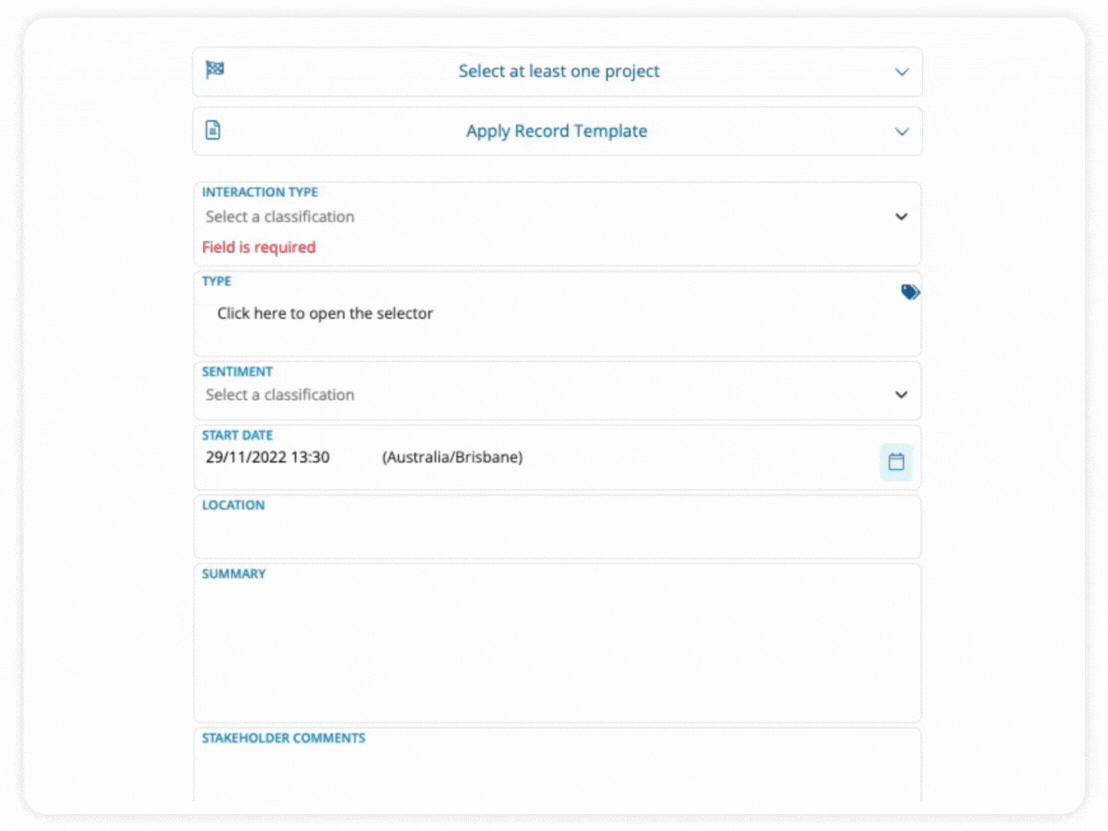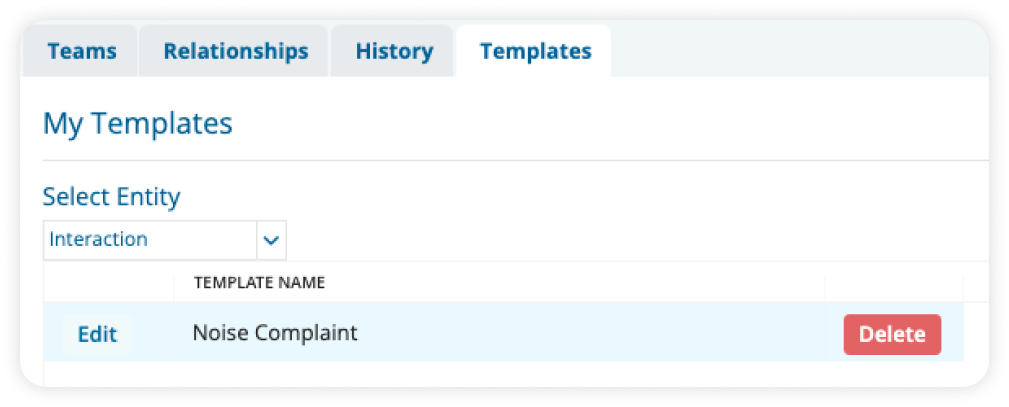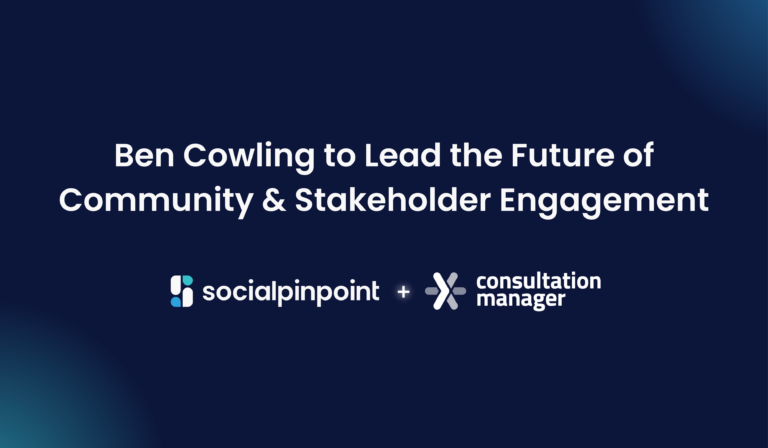How do you simplify record creation in one step? Reduce repetitive data input. Finding opportunities for automation can drastically reduce the time and energy spent on data entry. Templates can be easily used to reduce repetitive data input.
We understand that having the right tool to optimise data input will have more benefits beyond efficiency. Our brand new Templates tool is here to help streamline repetitive data entry and control inputs.
You can now create Templates for your records, including Stakeholders, Events, Actions, and any custom entities.
Better data controls.
Templates can be a useful tool for reducing repetitive data input by providing a standard format for data entry. For example, if you frequently need to collect similar information from different sources, you can create a template that includes all of the relevant fields and labels.
Templates are a way for you to configure a specific record type to prepopulate with information. They can be created for your own personal use or be set up for specific Teams to use on their Projects. Your data will be consistently formatted and organised, making it easier to input for everyone. This means that Users will have to follow a very precise workflow when entering data, allowing for a greater level of data control and reducing user error.

Speed up data entry.
Using Templates can save time by eliminating the need to create a new record from scratch each time you need to collect data. Therefore, you can streamline your record creation with any combination of prepopulated information.
When creating a Template you’re able to select any default value that you’d like associated or even include some helpful notes. Templates are here to automate those repetitive fields for similar records so you can focus on providing critical notes, summaries, or follow-ups.
- Looking for an easy way to log all noise complaints? Simply set up a new Event Template with the Type, Purpose, Sentiment, and Topic already prepopulated. You could even include some default text and/or prompt questions to help write a summary of the noise complaint.
- Recently engaged with a specific Stakeholder Group about Phase 2 of your Project? Great, attach a default Stakeholder Group, Distribution List, and add related notes or prompts to your Template for easy Stakeholder creation.

Added flexibility and ease of creation.
You can create a Template from scratch or utilise a pre-existing record as your base. As Templates can be edited at any time, you’re able to adjust and update depending on your data needs and requirements. And if you’re needing a Template to create a list of records for a certain period of time then you can easily delete this Template when no longer needed without affecting data integrity.
We’re so excited for you to start enjoying the benefits of Templates. Our Knowledge Base has a selection of support articles to help you make the most of this new feature. If you have any additional questions, please reach out to our support team.




